“Would you ask Ruth if she has a recipe for brisket?” our friend Marci requested when she met my husband for breakfast the other day.
With Hanukkah arriving early this year—on Thursday evening, Dec. 7—it isn’t an unexpected question. Beef brisket has become a ubiquitous dish on the Jewish holiday table, at least in America, and Hanukkah is no exception. With the growing number of vegetarians and vegans, along with those who have decided that eating meat, especially beef, is unethical, you’d think there would be few takers for brisket, but no—when it comes to holiday meals, all bets are off.
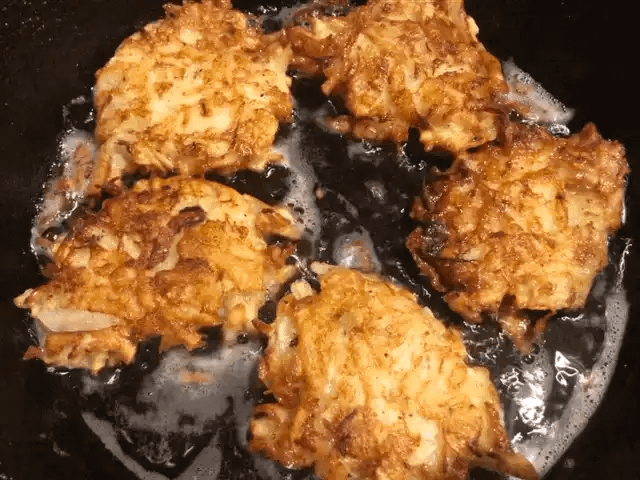
Of course, for Hanukkah, people still expect latkes, the deep-fried potato pancakes that for Jews of Eastern and Central European origin (Ashkenazi Jews) are a major symbol of the holiday. When guests come to our house for dinner, they usually start reciting the menu they’ve come to anticipate: latkes, followed by brisket, and then rugelach, the cookie that most people buy at a deli but that I like to make.
But back to Marci’s question. I do have a brisket recipe I’ve been using for several years now. It includes garlic, honey, horseradish and Dijon mustard, among other ingredients, and comes courtesy of Joan Nathan, one of my favorite sources for Jewish cooking. Nathan, in turn, took the recipe from an inventive chef, Adam Sobel. Sobel came up with it at the request of his father because Sobel’s mother had no idea how to cook a brisket. (Recipes, like family histories, often do seem to have an interesting backstory!) Here’s a link to the recipe, which is also included in Nathan’s 2017 cookbook, King Solomon’s Table, with some variations that I will talk more about below. But first some background.
Brisket: A little history
A tough portion of the lower chest of a steer, brisket wasn’t always “the Jewish holiday cut of meat par excellence,” says Nathan. Before the Civil War, chicken fricassee with meatballs, stuffed veal or short ribs might be served for special occasions.
Once refrigerated trains came into existence, “a whole brisket, a grainy American cut, became popular,” especially in Texas for slow-roasted barbecue—and Jews fell for it too, Nathan wrote, cooking it “long and braised, or gedempt fleysch,” meaning “well-cooked meat” in the Yiddish most of them spoke when they first came to this country.1
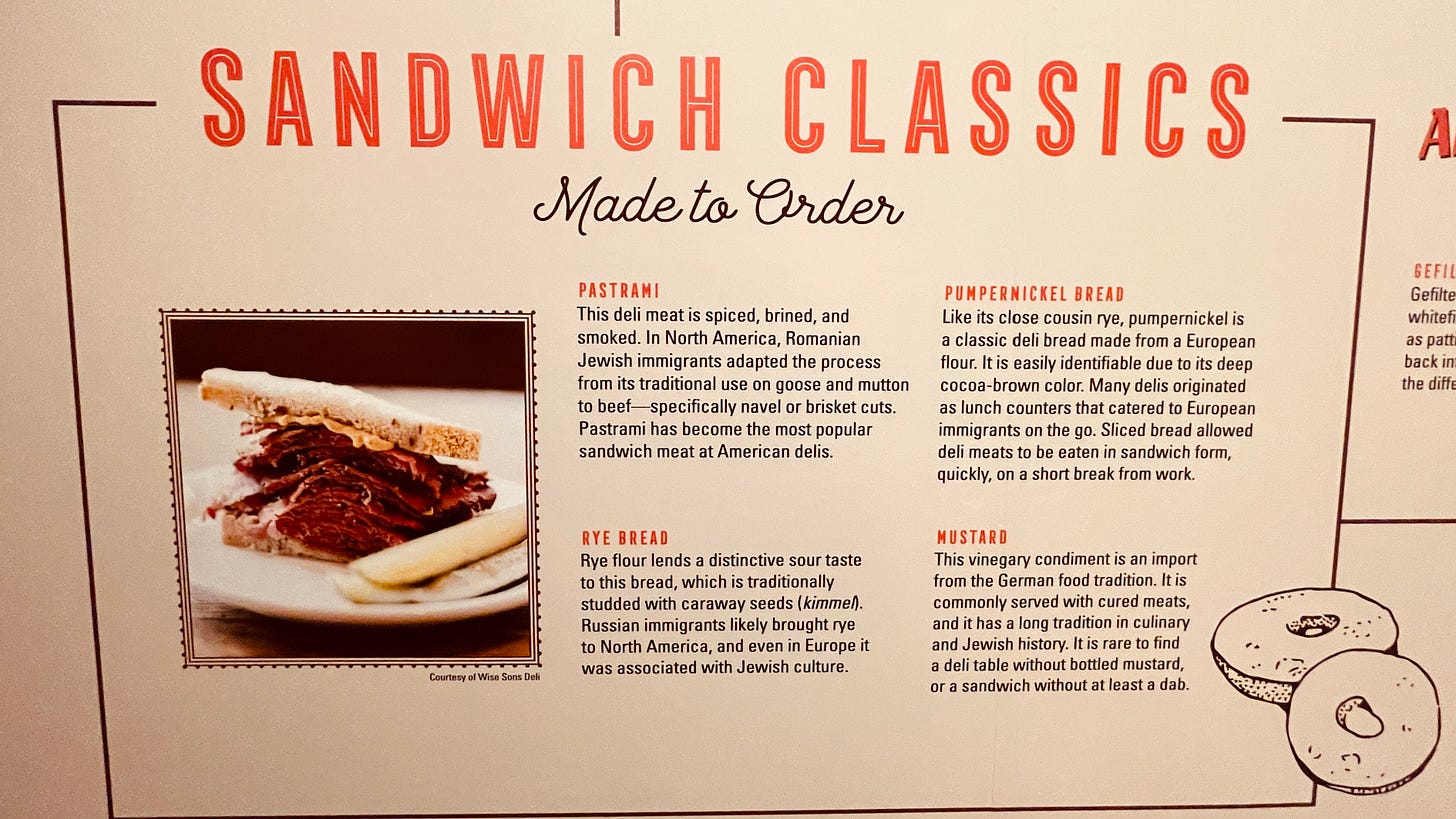
It turns out that Texas’s famed smoked brisket may even have Jewish roots, at least according to a 2014 article in the Texas Monthly. The author wrote about a store in Corpus Christi whose immigrant Jewish owners advertised their smoked brisket in 1916, along with pastrami, which is actually a smoked and cured brisket that is still a staple of Jewish delis everywhere (though, sadly, there are fewer of those around these days!).
Brisket was a popular cut of meat with immigrant Jews because, unlike some other parts of the cow, it was kosher and, in those days, cheap and flavorful when cooked right.2
Brisket: prep, size and type
Beef brisket, braised and slow-cooked in the oven or in a slow-cooker, can be prepared in any of dozens (or probably thousands) of ways. I’ve seen recipes for briskets rubbed in coffee, chili powder, brown sugar or mustard; doused in wine, Coca-Cola, 7 Up, or beer; spritzed with onion soup, tomato ketchup, Worcestershire or barbecue sauce, even tahini; swaddled in foil or slow-cooked with onions, potatoes and carrots, perhaps also dried apricots and prunes, and of course there are more to tickle your fancy! Just google “Jewish brisket recipe”—there are some 2,830,000 results!
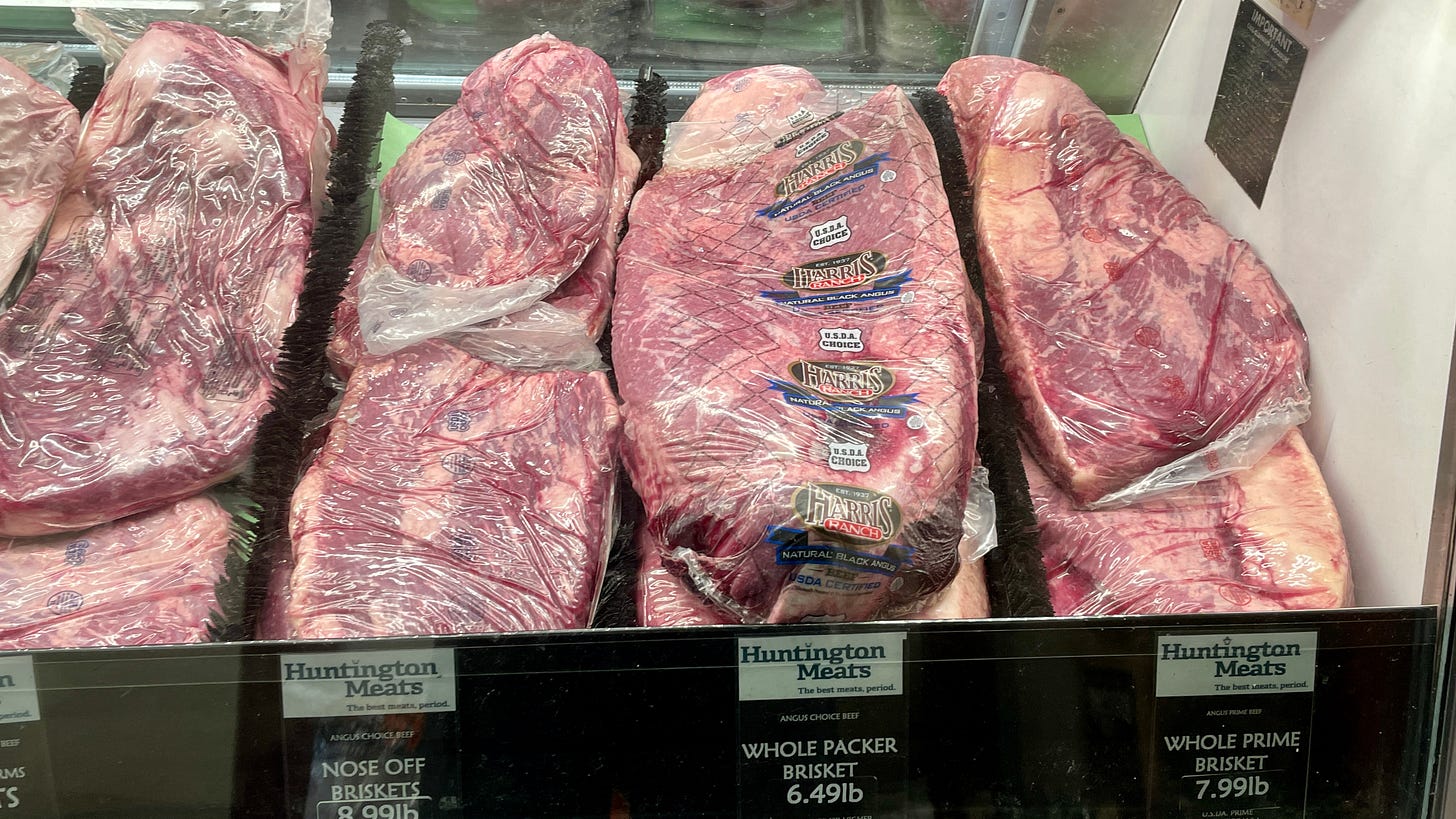
Just about anything you can think of to add to a beef brisket will do—though the preparations I’ve mostly tasted at Jewish holiday meals vary in flavor from sweet and sour to slightly spicy to stew-like savory. My friend Judy Bonn-Smith makes a classic and delicious version with Lipton’s Onion Soup Mix (these days called Lipton’s Recipe Soup & Dip Mix), a bottle of red wine, and plenty of sliced onions. “It’s virtually foolproof if you pour on the mix, the wine and seal it up tight,” she said.3
The important thing is that this extremely tough, usually large cut of meat (sizes can range from 2 to 14 pounds, with a 4 to 6 pound piece feeding between 8 and 12 people at a generous half-pound per person) needs lots of liquid and hours of cooking at a low temperature to tenderize it. If you’re smart, you’ll make it a day or two ahead of time and let it sit in the fridge overnight. That allows the fat to congeal so you can remove it before slicing it. After slicing (some do that with an electric carving knife!), you can freeze it, then warm it up in the oven, making brisket a good choice to prepare ahead for a party.

The point vs. the flat
Brisket has a lot of fat and shrinks considerably after cooking, especially if you order a whole one. This consists of two parts: the flat, often called the first cut, which is leaner, and the point, which is fattier.
There are debates about which cut has more flavor. I prefer the flat because it’s a fairly uniform rectangle of meat that’s easier to slice (always against the grain!)
For a large crowd, I’ve bought an entire brisket but had to cook it in two pans, given the size. But for many gatherings, depending on how many guests you have, your side dishes and whether you’re hoping for leftovers, a 4- to 5-pound flat brisket will do.
I’ve found that most problems with brisket arise, not from the lack of this or that flavoring, garnish or ingredient, but when one or more of these conditions isn’t met—too little liquid, too high heat, not enough time. But once a brisket is done, sliced and practically falling apart, it’s usually earns raves from your meat-eating guests.
With brisket selling for from $10 to $20 a pound in my neighborhood, it took a bit of imagining to fathom that it was once considered an economical cut for poor Eastern European Jews who represented the bulk of those emigrating to the U.S. in the late 19th century and early 20th century.
A favorite brisket recipe
And, for Marci, here finally is the recipe from Joan Nathan and Adam Sobel. Since a few things are different from the original recipe (click here to see it), I’m reprinting the ingredient list and directions from Nathan’s King Solomon’s Table.4
Slow-Cooked Brisket with Red Wine, Vinegar, and Mustard
(12 Servings)
Ingredients:
1 high-quality brisket (about 6 pounds or 2 3/4 kilos)
Coarse kosher salt and freshly ground pepper to taste
1/4 cup olive oil
6 carrots, peeled and sliced into 3 chunks each, cut on the diagonal
4 large onions, quartered
6 ribs celery, with the greens, cut into 2-inch chunks
5 cloves garlic, smashed and peeled
1/2 cup (120 ml) red wine vinegar
2 cups (470 ml) red wine
2 tablespoons honey or maple syrup
4 tablespoons fresh grated horseradish (Prepared is okay)
2 tablespoons brown Dijon mustard (I used my favorite Maille Dijon Original)
4 cups (945 ml) beef broth (or chicken or vegetable broth.)
2 bay leaves
6 sprigs fresh thyme (or a teaspoon of dry seasoning)
1/2 bunch parsley
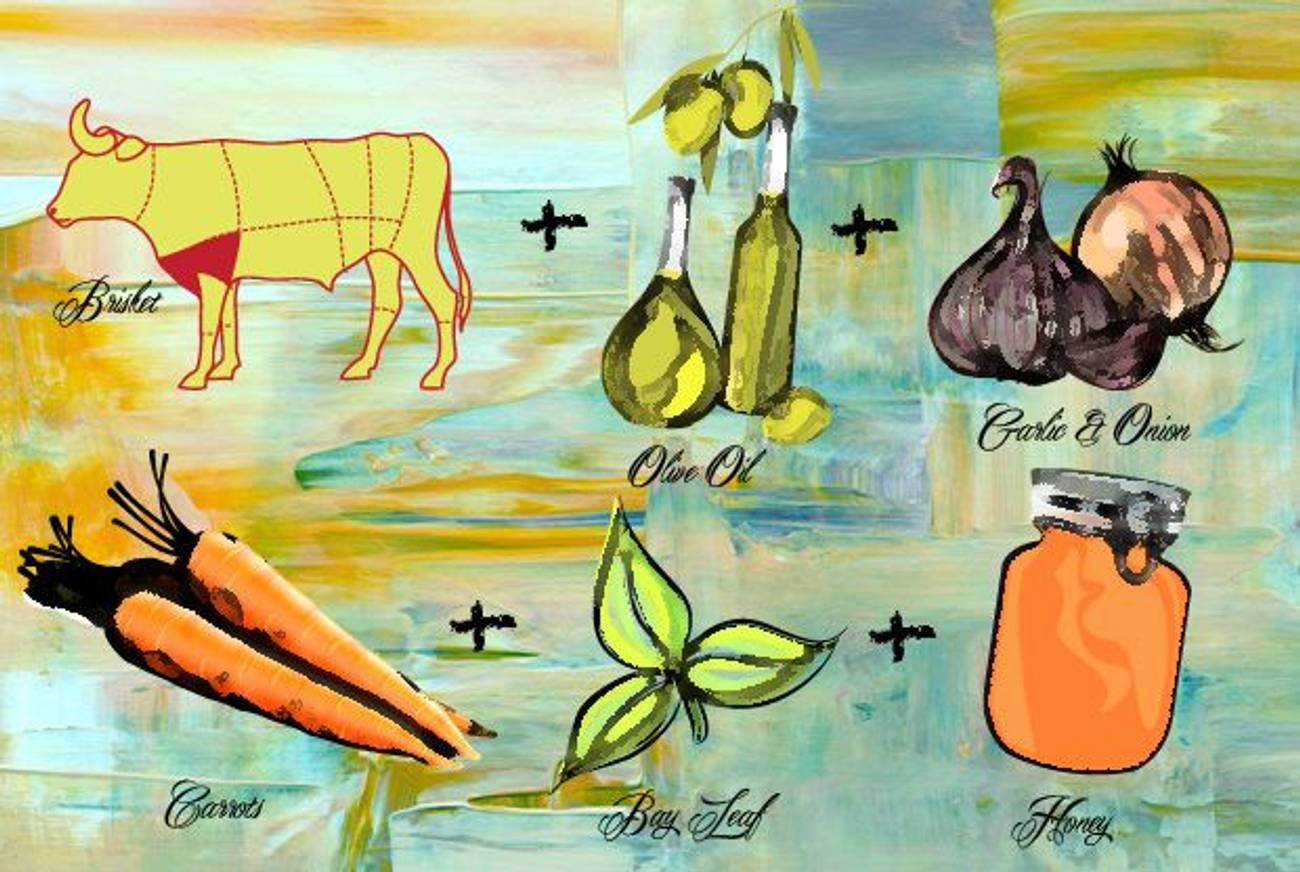
Directions:
Notes:
In comparing the original recipe, Nathan ups the carrots and celery, adds red wine and provides metric equivalents for ingredient measures, but the recipes are pretty identical.
I like the mix of ingredients, particularly the combination of bitter, sweet and acidic. I might up the sweet factor with a touch of tomato paste or the spice with a bit of smoked paprika or chili sauce. A few more vegetables, such as fennel or rutabaga, might be nice.
Latkes and rugelach revisited
In case you need a refresher on either of these, here are links to some previous posts:
Celebrating in troubled times
My friend Amie wondered if she should wish me a “Happy Hanukkah” considering “all that’s happening in the world.” Her words, and the sensitivity and compassion behind them, gave me pause.
Are we right to celebrate this holiday with friends while there is such unresolved strife in Israel and Gaza, huge division in this country and even in some of our families over how we can support a just outcome of the war in Gaza? Are we wrong to celebrate a holiday that commemorates an ancient victory of the Jews over those who would destroy them at this moment when so many innocents are suffering in Gaza—and in Israel—and a peaceful solution seems so out of reach?
And yet, how can we not celebrate a historic event that reaffirms our faith, especially with antisemitism such as we haven’t seen in our lifetimes on the rise once again? It seems there are those who hate us for simply being Jewish, not for anything we have actually done. Again it’s something I haven’t experienced before, yet it’s somehow so familiar. I’m afraid the understanding of it is encoded in my DNA.
I always thought we were safe here in the U.S. I used to argue with my parents who were afraid that what happened in Nazi Germany could happen here. I would still like to believe they were wrong.
By celebrating our identity and our holidays with joy, we are not saying we countenance violence, injustice and war, but we are saying we are proud to be Jewish Americans celebrating a holiday we enjoy in a land that allows us to hold different faiths—or none at all. So I do think we can wish each other Happy Hanukkah as well as Merry Christmas, Happy New Year and Happy Kwanzaa. This is a pluralistic country and hopefully will remain so. There is room for all of us, and it would be great if that wouldn’t change and we could continue to live in peace and try to understand each other, even if we don’t agree—maybe especially if we don’t.
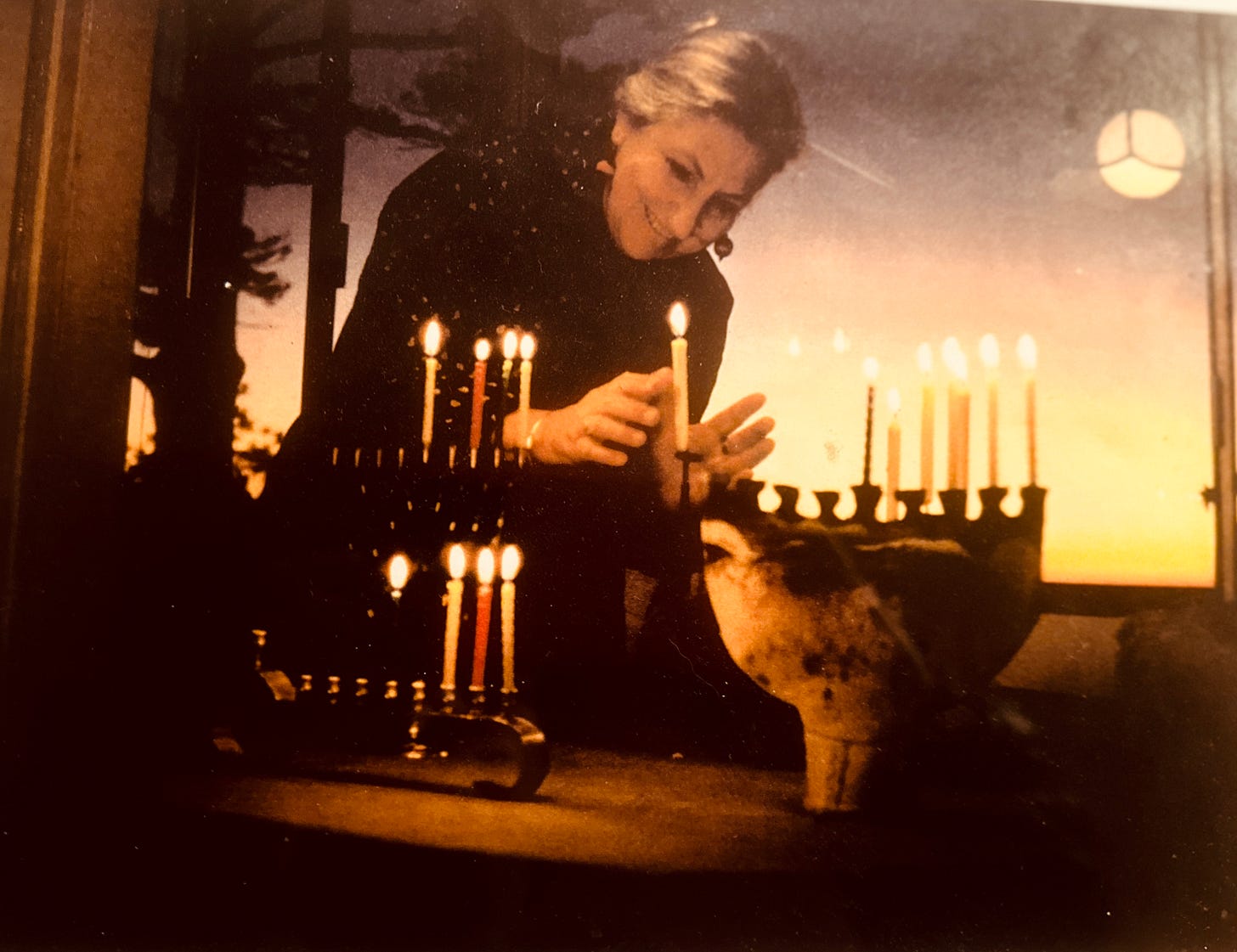
Happy Hanukkah to all of you who celebrate it. May the light of many candles, increasing by one each night, chase away the dark ignorance that promotes hatred, misunderstanding and violence between people and countries.
Thanks for taking the time to read, comment, subscribe and share this post. I hope everyone finds some joy in the holidays. The darkness of our skies as well as our politics can weigh on our spirits, but as the saying (almost a cliché by now) goes, it’s always darkest before the dawn. Let there be a brighter dawn for all of us.
Ruth
Nathan, Joan, “Slow-Cooked Brisket with Red Wine, Vinegar, and Mustard.” Recipe. King Solomon’s Table: A Culinary Exploration of Jewish Cooking from Around the World. New York: Alfred A. Knopf, 2017. 294. Print.
Daniel Vaughn, “The History of Smoked Brisket,” Texas Monthly, January 24, 2014.
Judy’s recipe for a 4-pound flat-cut brisket calls for cooking the roast at 325 degrees F for 5 hours—one hour for each pound, plus one more. During the last hour, she adds sliced russet potatoes and baby carrots to the pan, makes sure there’s enough liquid, then seals it up tightly once again. “You don’t want the meat to be dry, and you want enough liquid to use as gravy,” she said.
Nathan, p. 294.

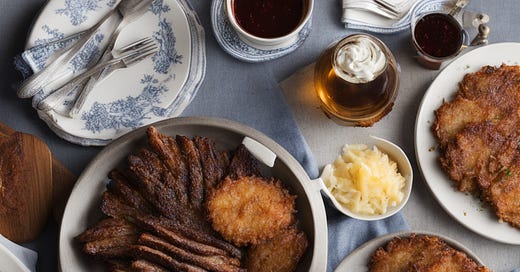


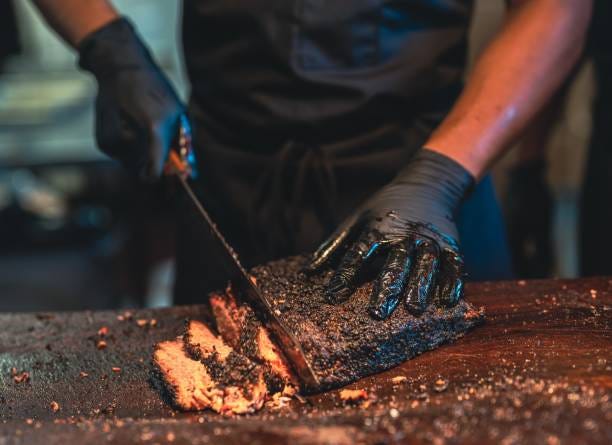
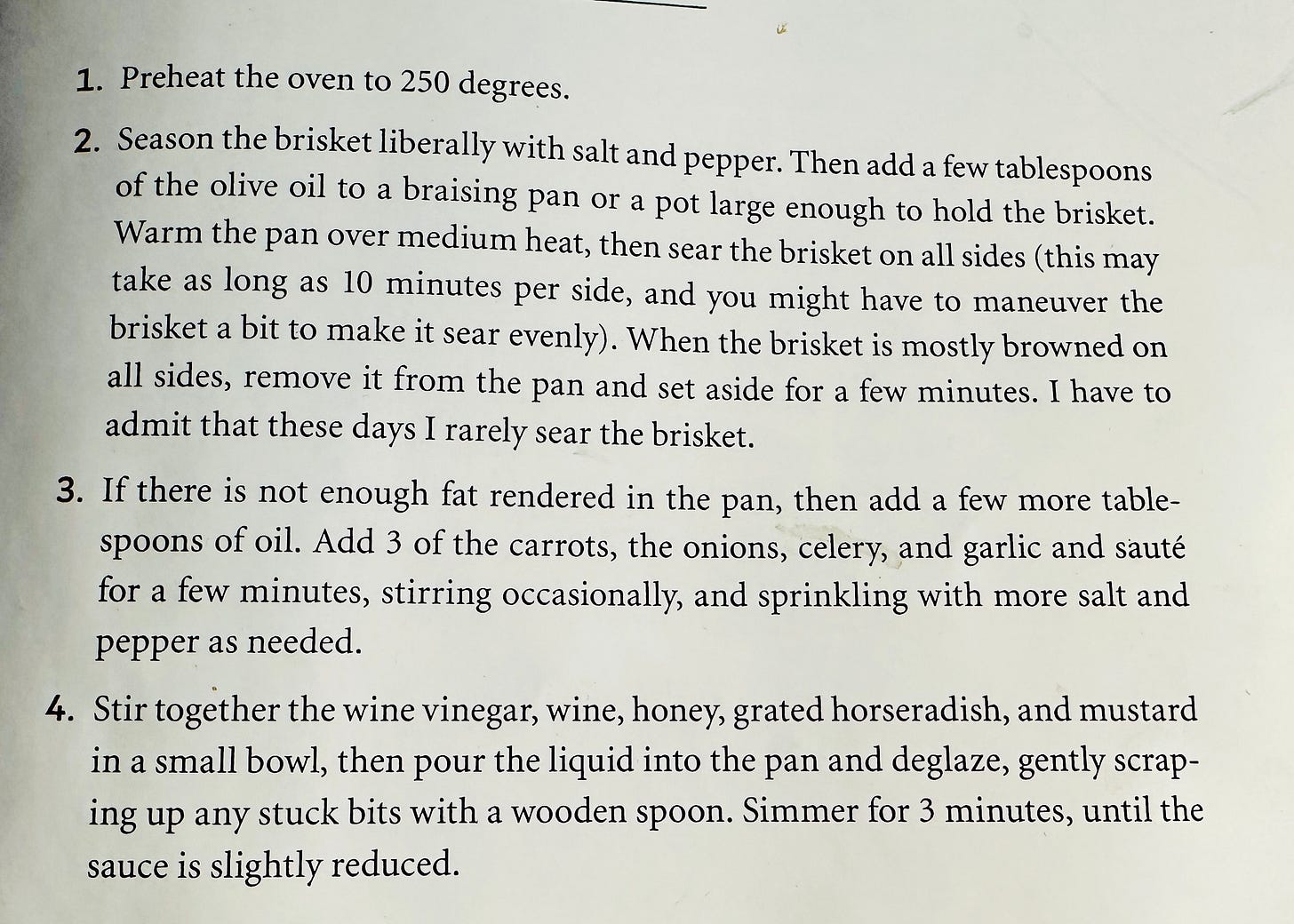
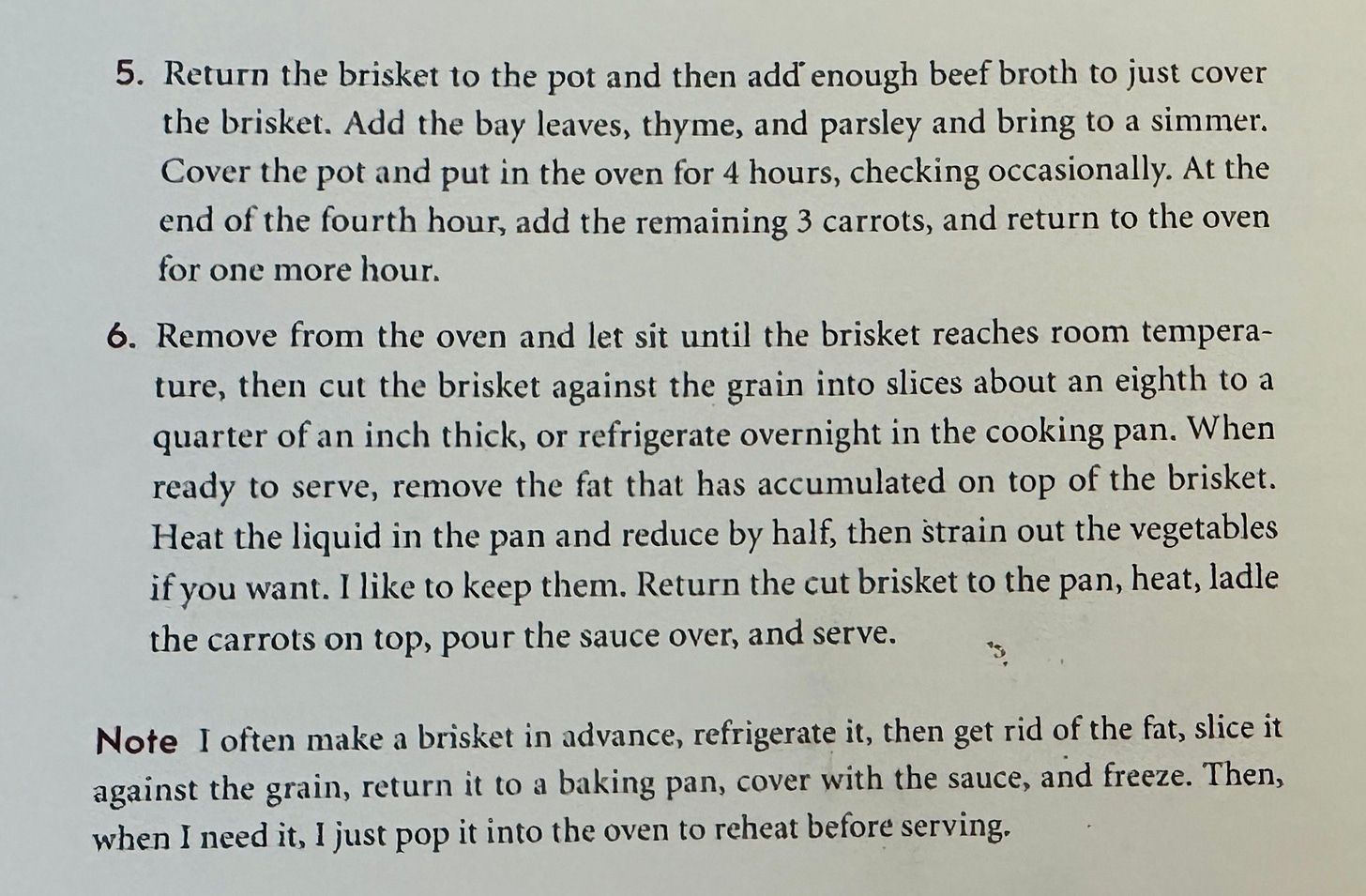


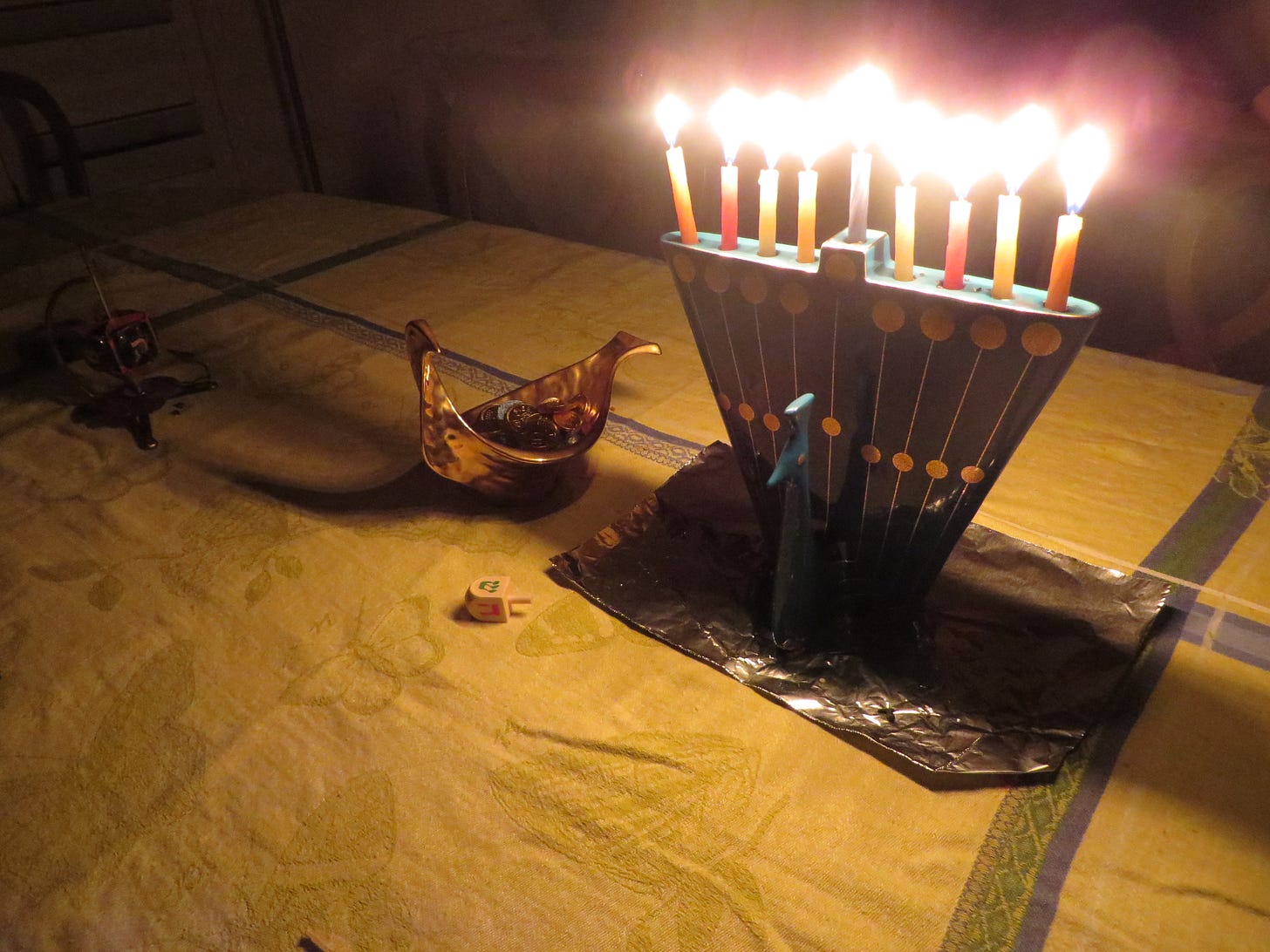
Yikes, that’s a massive piece of meat! I wish I had a smoker. But this is a lovely prep for brisket. Hope it works for you--and it’s easily adaptable.
Ruth, this is such a lovely post. And I’ll say, brisket, Rugelach and latkes are three of my favorite foods! I think I’d make a good Jew. I’m glad you cleared up the what brisket to buy conundrum I am usually in when I see all these huge pieces of meat at the butcher. One of my favorite recipes is an old Dinner Doctor classic, and I once made it in the apartment kitchen of my publicist’s mother in Manhattan. They were Jewish, not me, but I made the brisket! It was the onion soup recipe similar to the one you share. Delicious!